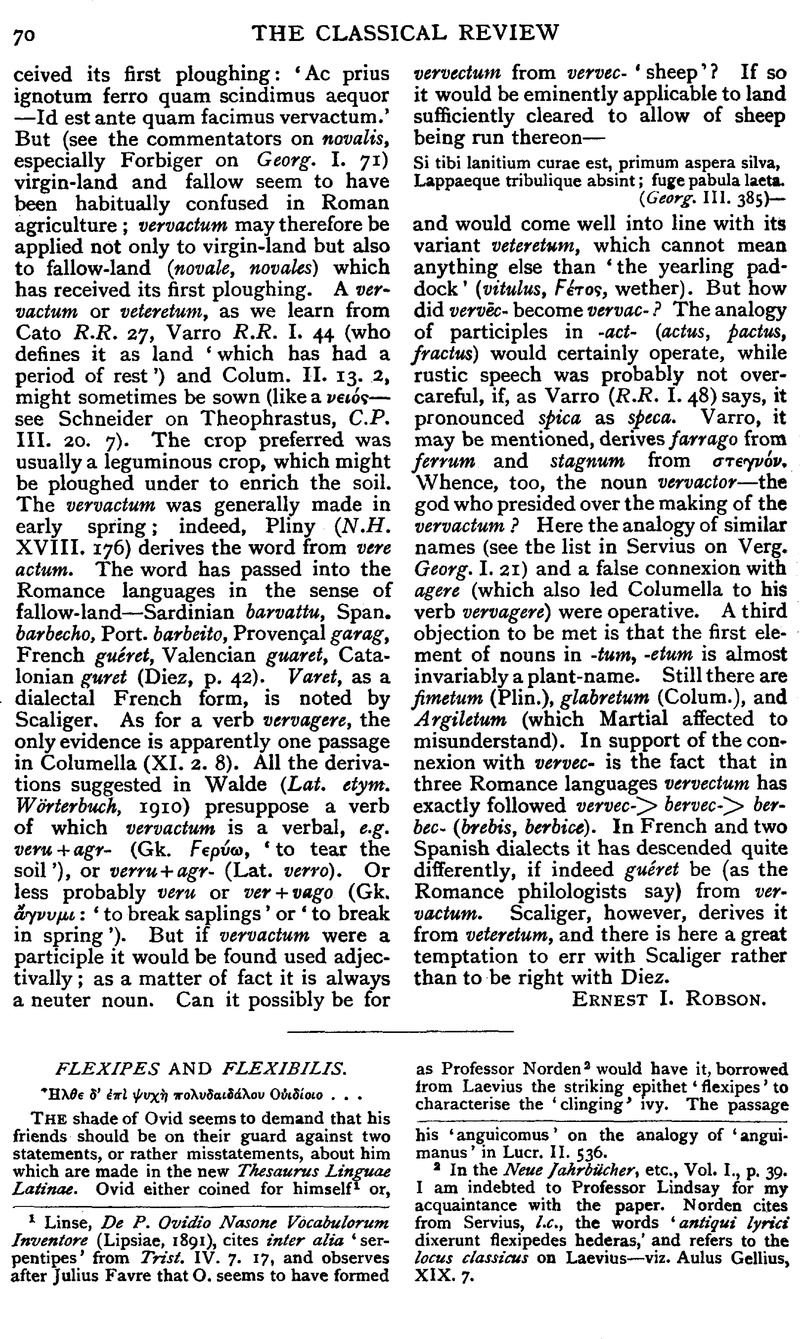No CrossRef data available.
Published online by Cambridge University Press: 27 October 2009

page 70 note 1 Linse, De P. Ovidio Nasone Vocabulorum Inventore (Lipsiae, 1891), cites inter alia ‘serpentipes’ from Trist. IV. 7. 17, and observes after Julius Favre that O. seems to have formed his ‘anguicomus’ on the analogy of ‘anguimanus’ in Lucr. II. 536.
page 70 note 2 In the Neue /ahrbücher, etc., Vol. I., p. 39. I am indebted to Professor Lindsay for my acquaintance with the paper. Norden cites from Servius, l.c., the words ‘antiqui lyrici dixerunt flexipedes hederas,’ and refers to the locus classicus on Laevius—viz. Aulus Gellius, XIX. 7.
page 71 note 1 So also the ed. Gryphiana (‘Venetiis, MDLXIII’)—both possibly from Planudes, who translates ![]()
page 71 note 2 ‘Flexipedes. Flexibiles olim, sed restituit’ (my italics) ‘iam Turnebus,’ etc.